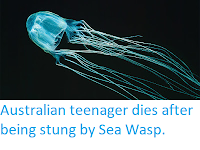Jellyfish of the genus Atolla have been recorded in every ocean basin, and encountered on almost all deep-sea expeditions. They are clearly an important part of deep marine ecosystems, although their ecological role is poorly understood. There are currently ten described species of Atolla, although some of these species are poorly documented and have descriptions which make them hard to differentiate, making the genus in need of a full taxonomic revision.
In a paper published in the journal Animals on 16 March 2022, George Matsumoto, Lynne Christianson, Bruce Robison, Steven Haddock, and Shannon Johnson of the Monterey Bay Aquarium Research Institute describe a new species of Atolla from Monterey Bay, California.
The Monterey Bay area has been extensively surveyed by Remote Operated Vehicles over the past two decades, and, as with other areas, numerous examples of Atolla have been observed. Notably, a number of specimens lacking the long trailing tentacles typical for the genus have been seen, which prompted Matsumoto et al. to collect specimens for morphological and genetic analysis. These collections revealed the presence of three genetically distinct species of tentacle-less Atolla within the Bay, one of which was also clearly morphologically distinct from all other Atolla species in ways other than the absence of tentacles, and is described as a new species, while the other two, referred to by Matsumoto et al. as Atolla sp A and Atolla sp B, show morphological overlap with other described species, and are not described as new species, pending a full review of the genus using genetic information.
The new species is named Atolla reynoldsi, in honour of Jeff Reynolds, who is considered to have been the first volunteer at the Monterey Bay Aquarium, after standing guard over a beached whale on Del Monte Beach overnight so that the Aquarium could retrieve it and prepare it for eventual overhead display. The species is described from ten specimens collected between April 2006 and June 2021 in Monterey Bay at depths between 1013 m and 3189 m.
Atolla reynoldsi has between 26 and 39 small tentacles around its rim, and a similar number of rhopalia (eyespots). It is flattish in shape, with a slight rounded dome at its centre. The pedalia (tentacle bases) each have nine lateral ridges, some of which have spikey projections. The gut of Atolla reynoldsi has what Matsumoto et al. describe as a distinctive 'Greek-cross' morphology, not seen in other members of the genus. The gonads are oval when immature but become large and horseshoe-shaped when mature.
See also...



Follow Sciency Thoughts on Facebook.
Follow Sciency Thoughts on Twitter.




